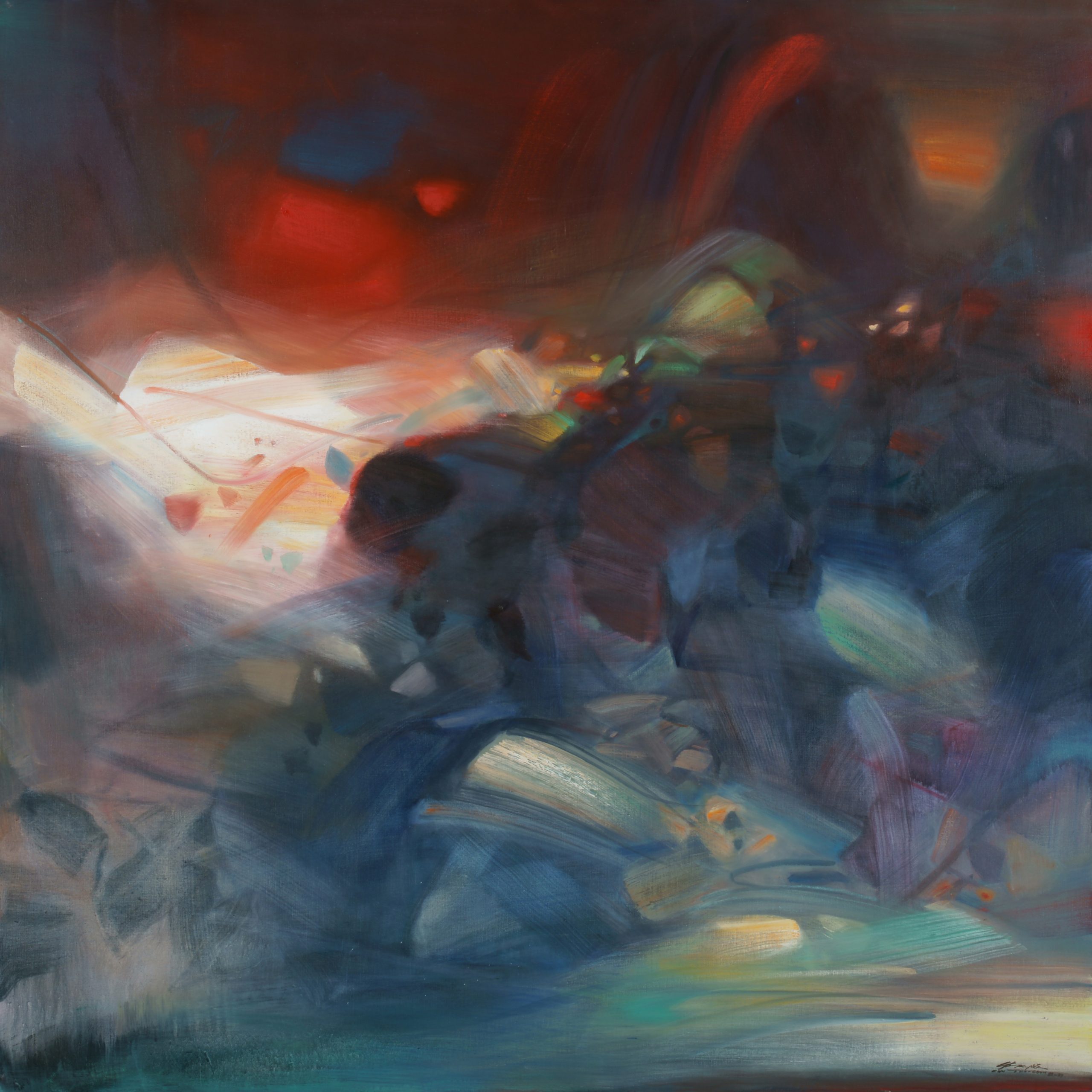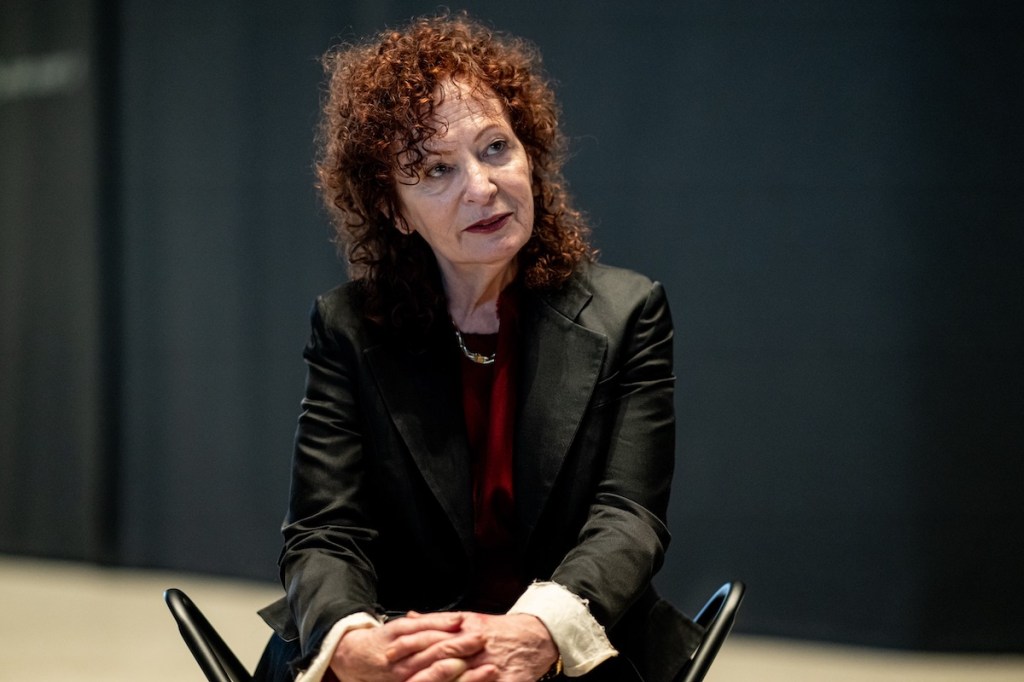The name of Chu Teh-Chun (1920–2014) should be no stranger to art market watchers. The late Franco-Chinese painter is best known for his poignant abstract paintings that marry the techniques of traditional Chinese painting and that of Western art. Over the last several years, his work has been commanding ever-higher prices at auction. There are more than 3,200 entries of auction transactions on Artnet’s Price Database, with an auction record of $29.5 million set in 2021 at a Sotheby’s Hong Kong sale.
Although one might catch a few individual works by the 20th-century master on view at an auction preview, a thorough survey of Chu’s work has been hard to come by despite the fact that his paintings have been widely exhibited in and collected by more than 50 museums worldwide.
The opportunity for a comprehensive review of his artistic practice is here now. Coinciding with the Venice Biennale, retrospective of Chu titled “In Nebula” is currently on show at Fondazione Giorgio Cini on the island of San Giorgio Maggiore through June 30.
Chu Teh-Chun, La grace de l’aurore (2001). Courtesy of Chu Teh-Chun Foundation.
Organized with the support of the Chu Teh-Chun Foundation and thoughtfully curated by art historian Matthieu Poirier, this beautifully mounted exhibition in a vast space that was once a large swimming pool showcases some 50 exceptional works by the artist, including one on loan from the Musée d’Art Moderne in Paris, from across the different periods in his expansive career.
Installation view of “Chu Teh-Chun: In Nebula.” Courtesy of Chu Teh-Chun Foundation.
Poirier takes the audience on a time-travel journey to discover Chu’s past and the evolution of his oeuvre, which is presented in a reverse chronological timeline that blends seamlessly with the architecture of the space. Viewers’ downward, winding movement along the three levels of boardwalk to the base of the pool reflect a journey into the heart of Chu’s mystic paintings.
“Those paintings never let your eyes rest,” said Poirier during an introduction of the exhibition, noting that the artist was an abstract landscapist. “When Chu arrived in France, he carried his memories of the landscapes with him.”
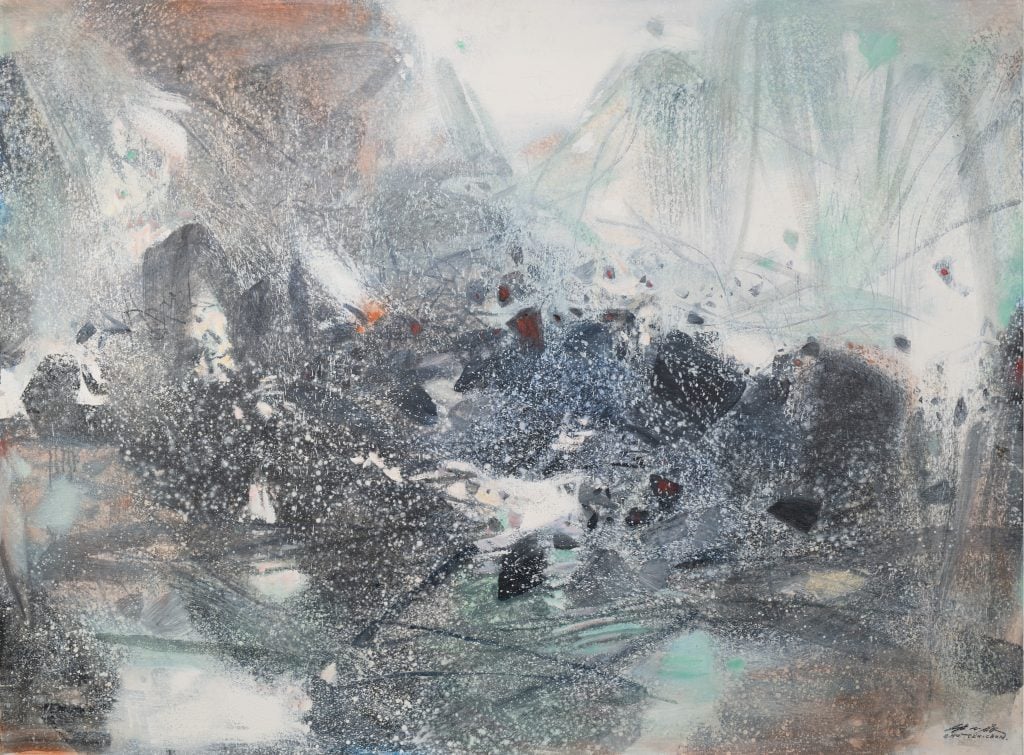
Chu Teh-Chun, Nature Hivernal A (1985). Courtesy of Chu Teh-Chun Foundation.
Born in Baitu Zhen, Xiao district, Jiangsu province (now Anhui) in China into a family of art connoisseurs, Chu began learning calligraphy and Chinese poetry at a very young age. He then started painting under his father’s encouragement and in 1935, at the age of 15, he enrolled the Hangzhou Academy of Fine Arts, where he was first exposed to modern Western art from the teaching of artist-professors such as Lin Fengmian and Wu Dayu, both were educated in France. Around this time, he also met Wu Guanzhong, who went on to become one of the greatest painters of his time.
Installation view of “Chu Teh-Chun: In Nebula.” Courtesy of Chu Teh-Chun Foundation.
But Chu had to deal with hardships during the subsequent turbulent years of the Second Sino-Japanese War and the Chinese civil war between the Communists and the Kuomintang. He left the country to Taiwan in 1949 and eventually settled in Paris in 1955. He lost nearly all of his early works amid the turmoil. Following his settlement in Paris, despite continuing to create, Chu remained as a marginal figure.
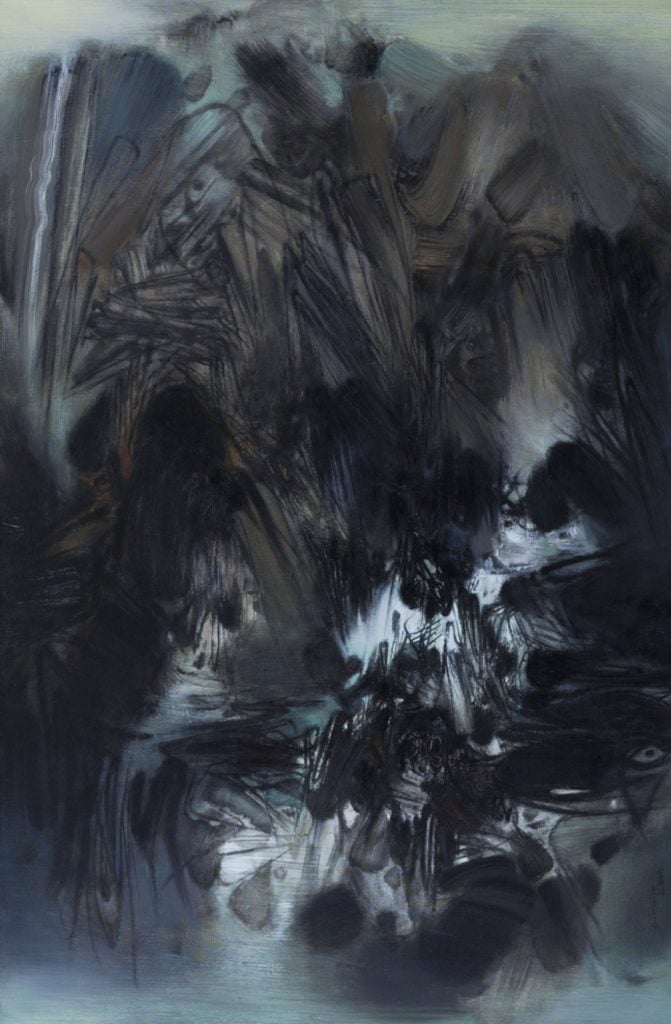
Chu Teh-Chun, Composition n°228 (1966). Courtesy of Chu Teh-Chun Foundation.
“He was a quiet person, an introvert,” said Poirier, explaining why the artist was not very good at making himself the center of the spotlight, and hence a late boomer in his career. “He didn’t get his first retrospective until 1978. He was already 58,” noted the curator.
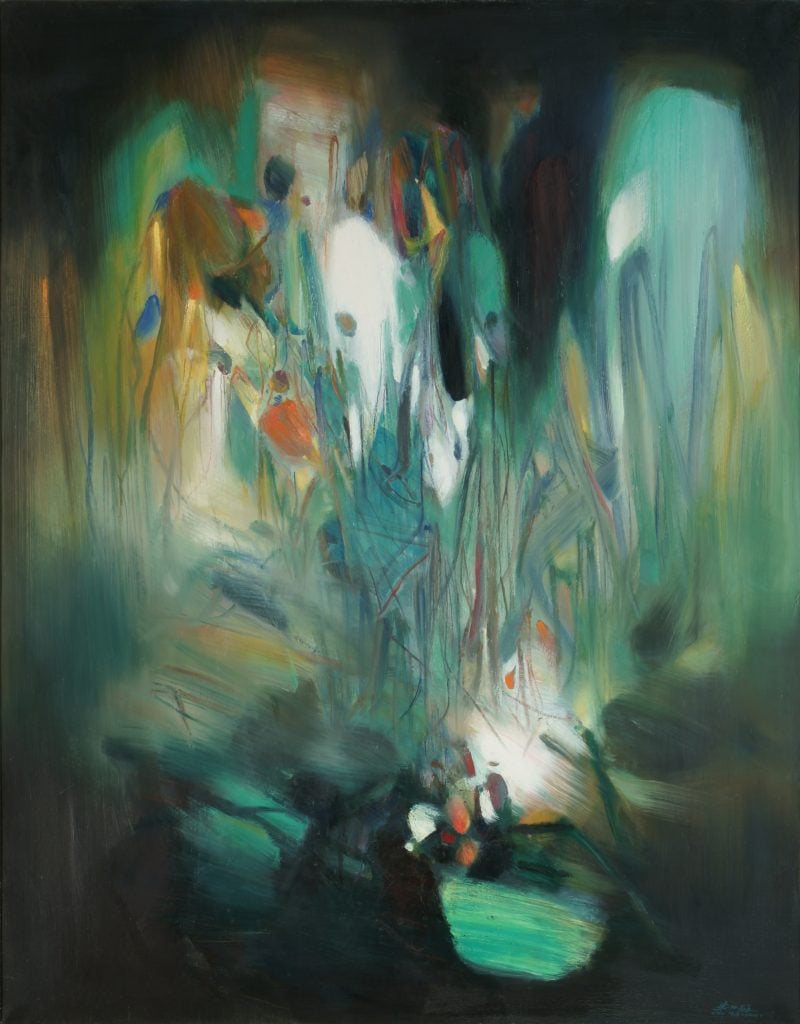
Chu Teh-Chun, Le 8 juillet (1976). Courtesy of Chu Teh-Chun Foundation.
The exhibition puts Chu’s works in context and as one walks further down to the bottom of what used to be a swimming pool, one can catch a glimpse of Chu’s evolution from the earliest figurative works available to the monumental paintings depicting not just an abstraction of landscape, but the depth of space conjured by light, time, colors, and brushstrokes.
“Chu Teh-Chun: In Nebula” is on view until June 30 at Fondazione Giorgio Cini, San Giorgio Maggiore Island, Venice.
Follow Artnet News on Facebook:






